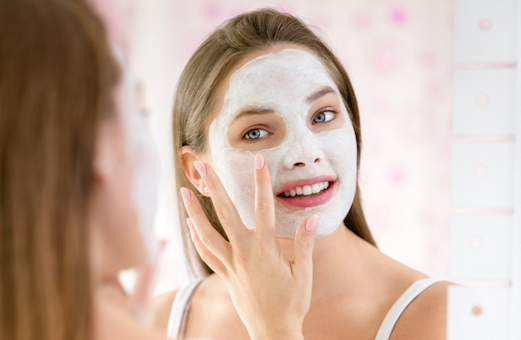STYLE
Beauty
The DIY facial mistakes you're making

You overdo it on the acid
If lemon juice, vinegar or yogurt are you go-to ingredients for at-home facials, you could be doing more harm than good. The acids found in these foods can be perfect for exfoliating your skin, but *only* if used correctly—otherwise, you can burn your skin and make it more sensitive to sunlight, breakouts or other nasty factors. Make sure you're using proper dilution ratios and keeping these types of treatments infrequent (2x a month max).
You’re using raw essential oils
If you take to Pinterest every time you need a new beauty DIY, you’ve probably fallen into the essential oils craze. Don't get us wrong—essential oils can be awesome. But when applied to skin without dilution with water or coconut oil, oils like lavender, rosehip oil and tea tree are far too harsh and are likely to wreak havoc on sensitive skin.
You reached for baking soda instead of sugar
When it comes to a DIY scrub, not all exfoliates are created equal—though if used gently, coarse ingredients like sugar, salt and oats can work wonders for your skin. (Just don’t go overboard when you apply them unless you want to end up with red, raw, and uncomfortable cheeks.) And baking soda? It's the enemy. Not only is it way too harsh, it can mess with the pH of your skin and cause disastrous breakouts.
You keep your DIYs for too long
Because your mask mixtures are typically made up of fresh food ingredients, they don’t come with the chemical preservatives found in store-bought products. Your DIY product is going to go bad more quickly, so you shouldn’t keep it around for more than a few days. Always remember, too, to store your DIY in the refrigerator to keep bacteria at bay.
Are you guilty of any of these DIY disasters? What's your go-to DIY face mask?

 become a contributor
become a contributor













.png)



